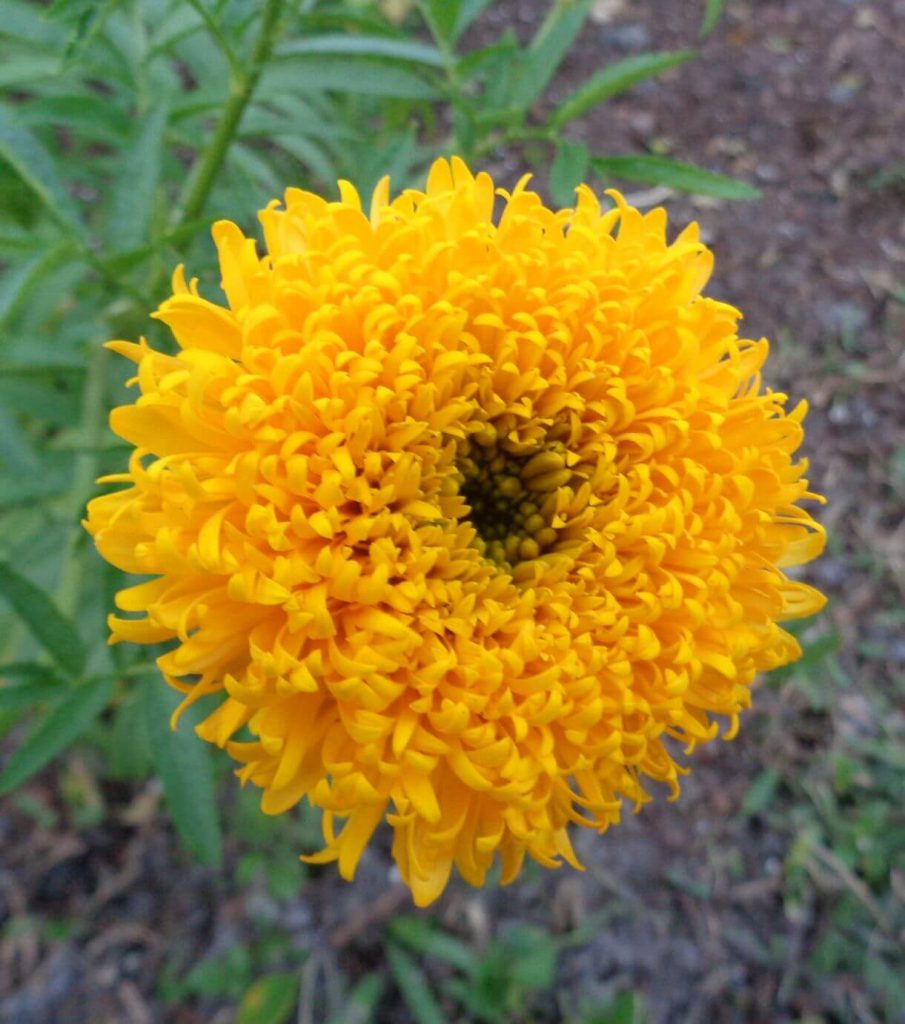 If you want to plant an annual flower that just about anybody can succeed with, try marigolds. Marigold, a title originally derived from “Mary’s Gold”, was a name actually attached to the equally popular Calendula or Pot Marigold. Available in a wide range of colors from the favorite shades of orange, yellow and golden-colored, to bi-colored and ivory white, this bedding plant and cut flower subject is a good choice for the home landscape.
If you want to plant an annual flower that just about anybody can succeed with, try marigolds. Marigold, a title originally derived from “Mary’s Gold”, was a name actually attached to the equally popular Calendula or Pot Marigold. Available in a wide range of colors from the favorite shades of orange, yellow and golden-colored, to bi-colored and ivory white, this bedding plant and cut flower subject is a good choice for the home landscape.
Marigolds are native to subtropical America and have been grown in Mexico for over two millennia. The American marigold, sometimes called African, or Tagetes erecta, is known for its large flowers and tall plants. Tagetes patula is the French marigold with small-flowered, dwarf plants. There is also one lesser known type called the signet marigold (Tagetes tenuifolia) which has very small flowers and leaves. American marigold plants can grow up to three tall and one foot wide and have flowers several inches across. This characteristic tallness also makes them susceptible to falling over in windy and rainy weather. French marigolds are much smaller than American and are often called dwarf marigolds. These plants are generally a foot tall and less than a foot in width with flowers an inch or so wide.
Marigold seeds are easily germinated in a week or less and started plants are almost always available at local garden centers. Set the plants in the garden at the same level they were in the pot or even a little
deeper at intervals of twelve to eighteen inches apart. All marigolds prefer a full sun area of at least six hours of sun per day. While Fall is a good time of year for marigolds as the climate cools down a bit and moisture and humidity decrease, I started some in March for a spring display with equally great success.
Although the marigold is an easy plant to grow, even for those without green thumbs, there are a few pests to look out for. Mites, tiny spider-like creatures, feed on the leaves especially during hot, dry weather causing the foliage to lose color. Fine webbing may also be noticed. Leaf tier caterpillars may also roll up leaves as they feed on the inside. Slugs may even feed on marigolds at night leaving their silvery slime trail in the morning.
There are also several diseases that may afflict marigolds. Personally, I have encountered a situation where the stems of my marigolds turned brown and rotted at the soil level. This wilt and stem rot disease
is best controlled by removing and destroying affected plants. Sometimes rotation of a flower crop with a totally unrelated type may also help disrupt a build-up of certain disease issues. Making sure that enough space is provided between plants for good air circulation will also help plants dry out quicker thus reducing the chance of disease outbreaks. General plant sanitation by removing all old plant parts
and perhaps improving drainage can also help. In wet weather, botrytis blight may cause flowers to turn brown and die prematurely. A gray mold may form on older, fading flowers as well. Removing the infected flowers will help control this disease.
As far as selecting a variety to grow I would recommend trying all of them! There is a virtual universe of cultivars available locally or through seed catalogs. While I tend to grow dwarf French marigolds, I have also grown a larger white variety and even a brightly stripped cultivar. In 2019 I tried a yellow American cultivar with large Chrysanthemum-like flowers that has done extremely well. In time, you will discover a variety or two that you really like! For more information on all types of flowering bedding plants suitable for our area, please call our Master Gardener volunteers on the Plant Lifeline on Mondays, Wednesdays and Fridays from 1 to 4 pm at 764-4340 for gardening help and insight into their role as an Extension volunteer. Don’t forget to visit our other County Plant Clinics in the area. Please check this link for a complete list of site locations, dates and times – https://blogs.ifas.ufl.edu/charlotteco/files/2018/03/Plant-Clinics-Schedule.pdf. Ralph E. Mitchell is the Director/Horticulture Agent for the Charlotte County Extension Service. He can be reached at 941-764-4344 or ralph.mitchell@charlottecountyfl.gov.
Resources:
Gilman, E. F. (2014) Tagetes tenuifolia Signet, Signet Marigold. The University of Florida Extension Service, IFAS.
Gilman, E. F. (2014) Tagetes erecta Perfection Yellow. The University of Florida Extension Service, IFAS.
Gilman, E. F. (1999) Tagetes patula. The University of Florida Extension Service, IFAS.
Brother John M. Samaha, S.M. (2019) Marigolds: Mary’s Gold. University of Dayton, Ohio.
 0
0
